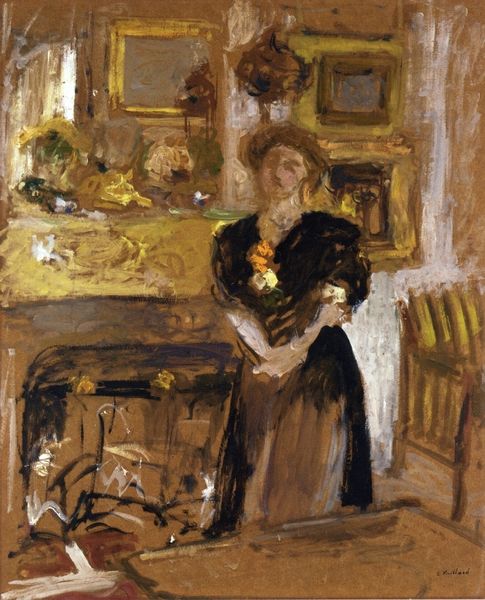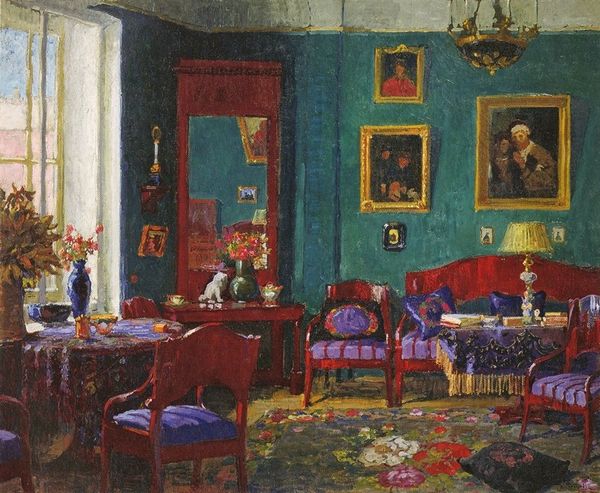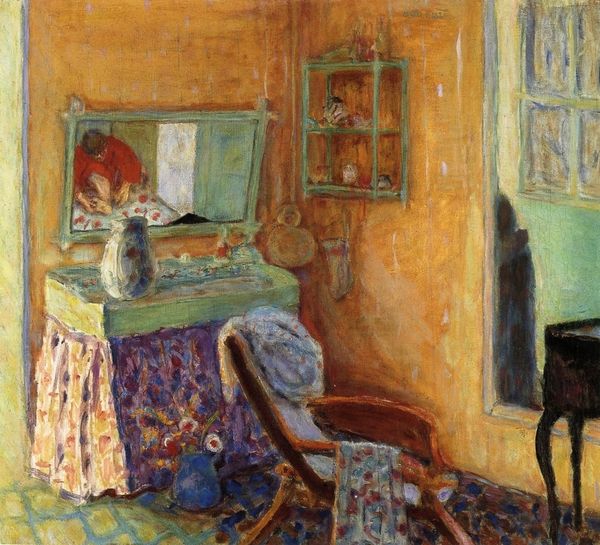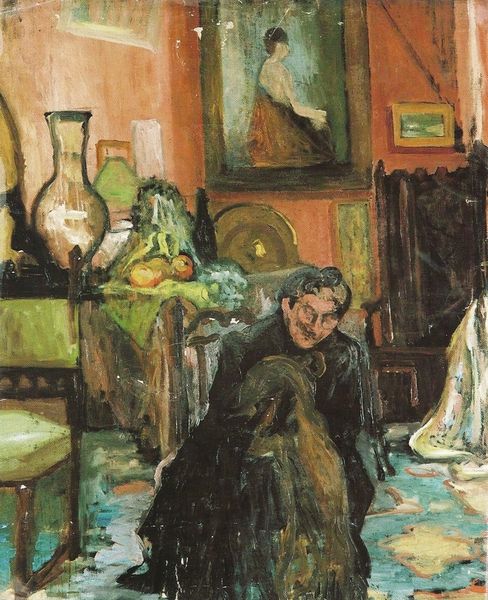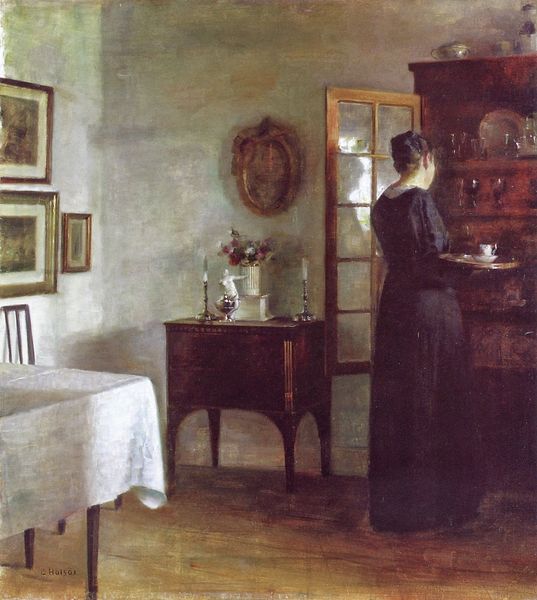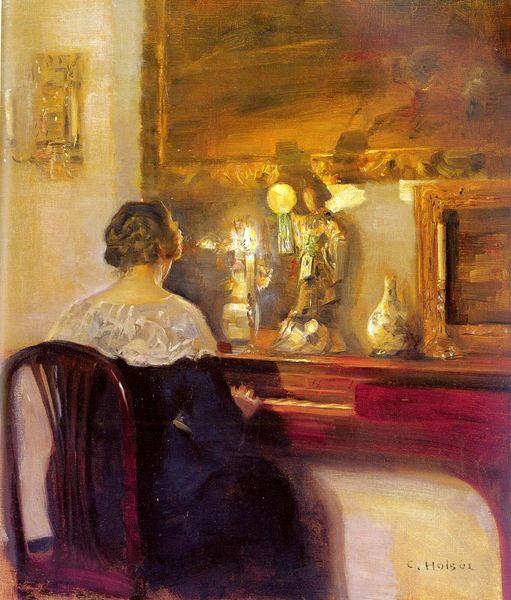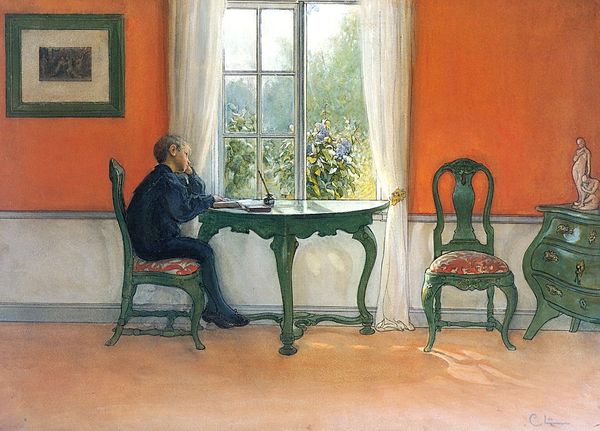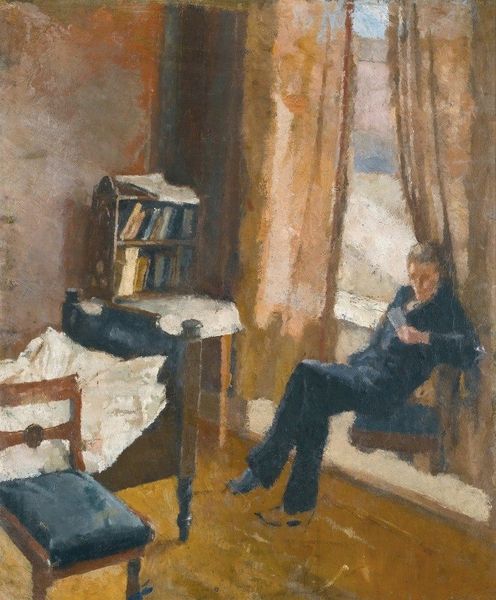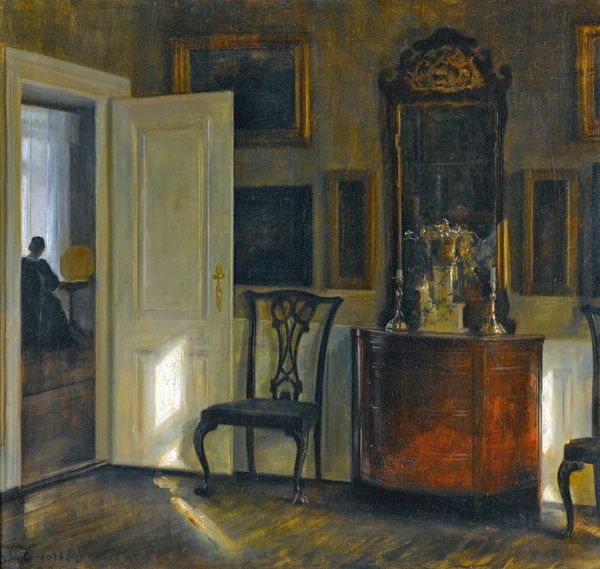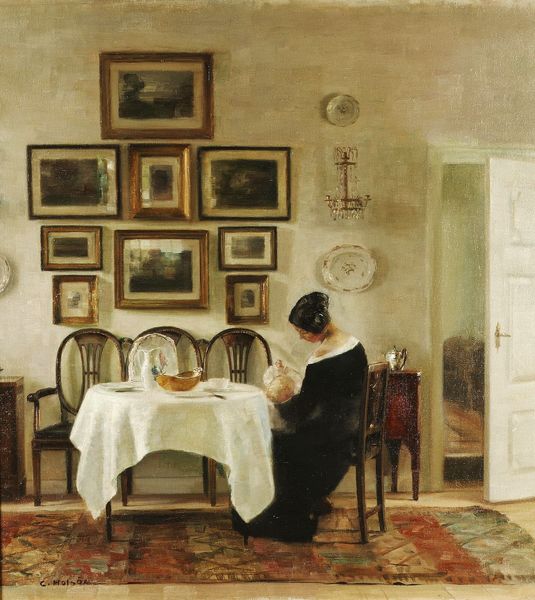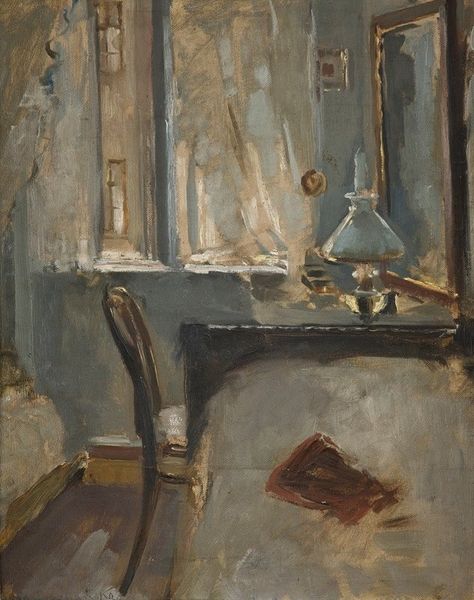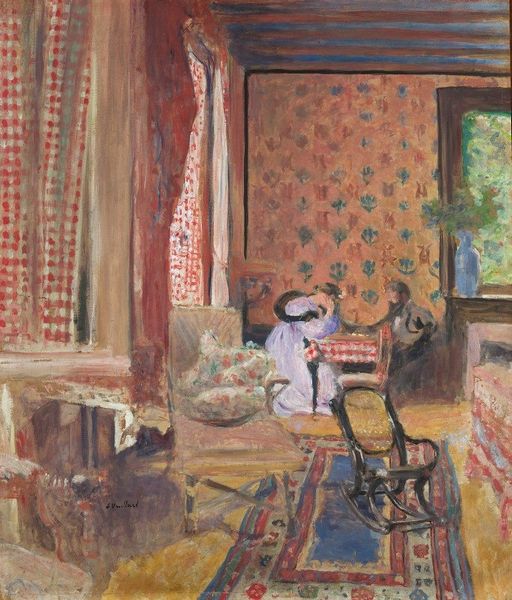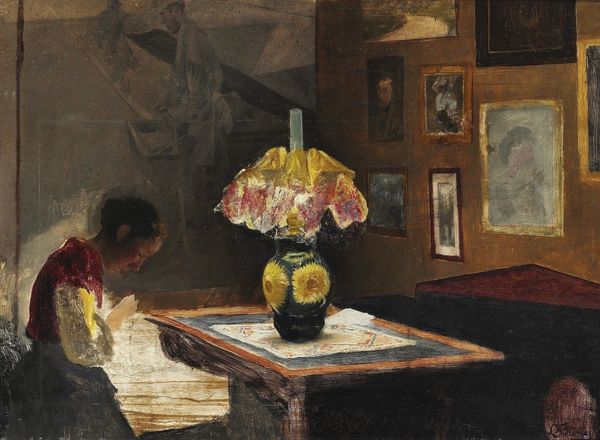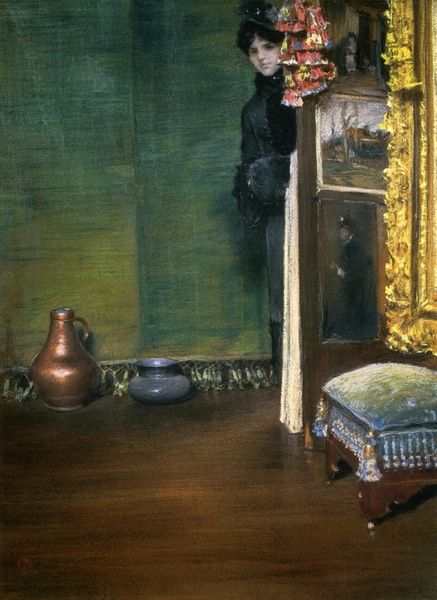
Copyright: Public domain
Editor: So, here we have Kitty Lange Kielland's "Interior," painted in 1883, using oil paint. It's a genre painting, showing a woman reading. What strikes me is how domestic the scene feels, almost mundane. What can you tell me about it? Curator: This is more than a simple domestic scene. Kielland’s application of oil paint here tells a compelling story about the conditions of art production at the time. Note the visible brushstrokes – it’s about *how* it's made as much as *what* is made. Do you think the deliberate display of brushwork elevates the painting or exposes it as simply a craft? Editor: That’s an interesting point. It feels elevated because it’s on canvas, framed, and displayed. I guess I don’t normally consider the labor behind making something seem elevated like this. Curator: Exactly. This blurring of boundaries between fine art and the "craft" of painting allows us to question how artistic value is assigned, not just for her paintings, but also how paintings like this are different than, say, the making of the furniture in this scene. The materials used, the time invested, who benefits from the finished object; each of these elements invites a dialogue on labor, class, and value systems. Editor: So it's about looking at the physical reality of art-making, and the economic factors at play? Curator: Precisely! Considering what Impressionism afforded Kielland in the 1880's versus other movements helps us further situate this artist within her historical conditions of production and consumption. Editor: I see that it offers a new way to consider artistic meaning. Thank you! Curator: My pleasure, thinking about art this way allows us to consider how paintings speak to cultural forces beyond the canvas.
Comments
No comments
Be the first to comment and join the conversation on the ultimate creative platform.
